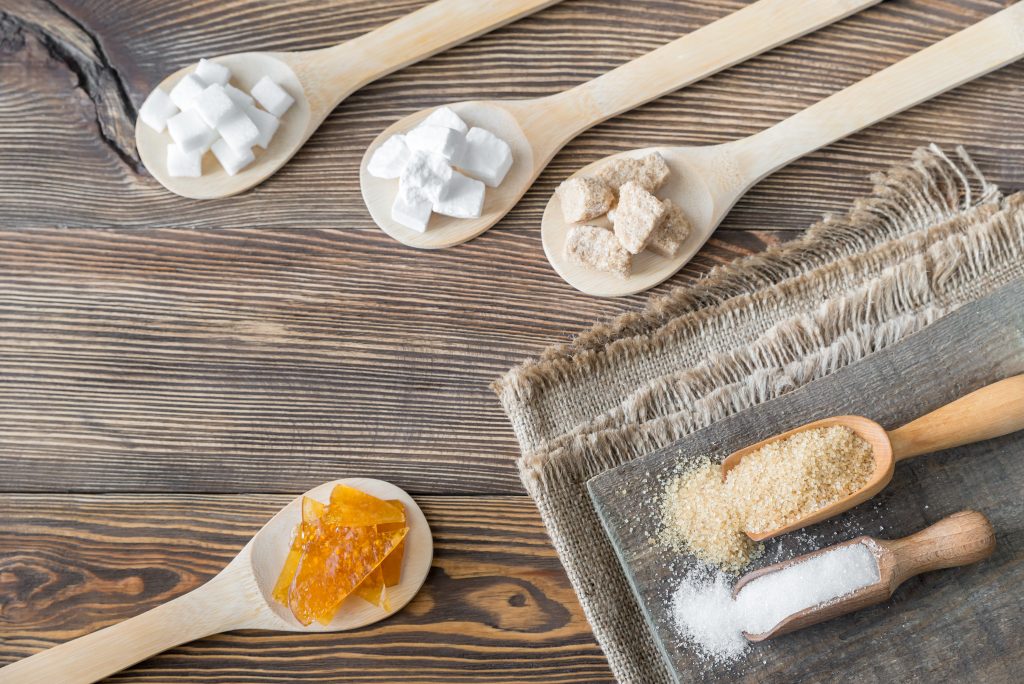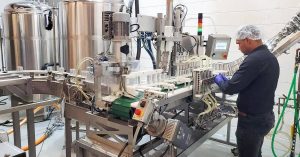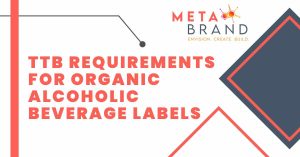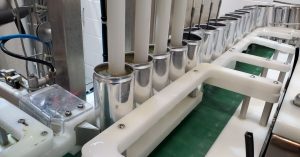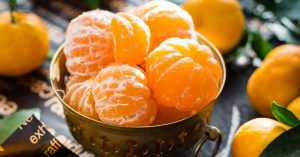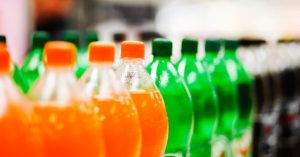Key Highlights
- Understanding the evolution of sweeteners, particularly the shift from sugar to HFCS, is crucial for both consumers and the beverage industry.
- The use of HFCS has sparked significant debate due to potential health implications, including its link to obesity, diabetes, and other metabolic diseases.
- The beverage industry is continuously evolving, with ongoing exploration of natural and artificial sweeteners in response to consumer preferences and health concerns.
Introduction
The sweet taste of our favorite beverages is often due to a key ingredient: sweetener. Beyond simply enhancing flavor, sweeteners play a crucial role in beverage formulas, influencing texture, preservation, and overall palatability.
While sugar was the primary sweetener for centuries, the landscape has shifted, with other contenders like high-fructose corn syrup (HFCS) emerging as major players.
This article examines the evolution of sweeteners, with a focus on HFCS and its impact on sugar content, consumer health, and the beverage industry.
The Evolution of Sweeteners in the Beverage Industry
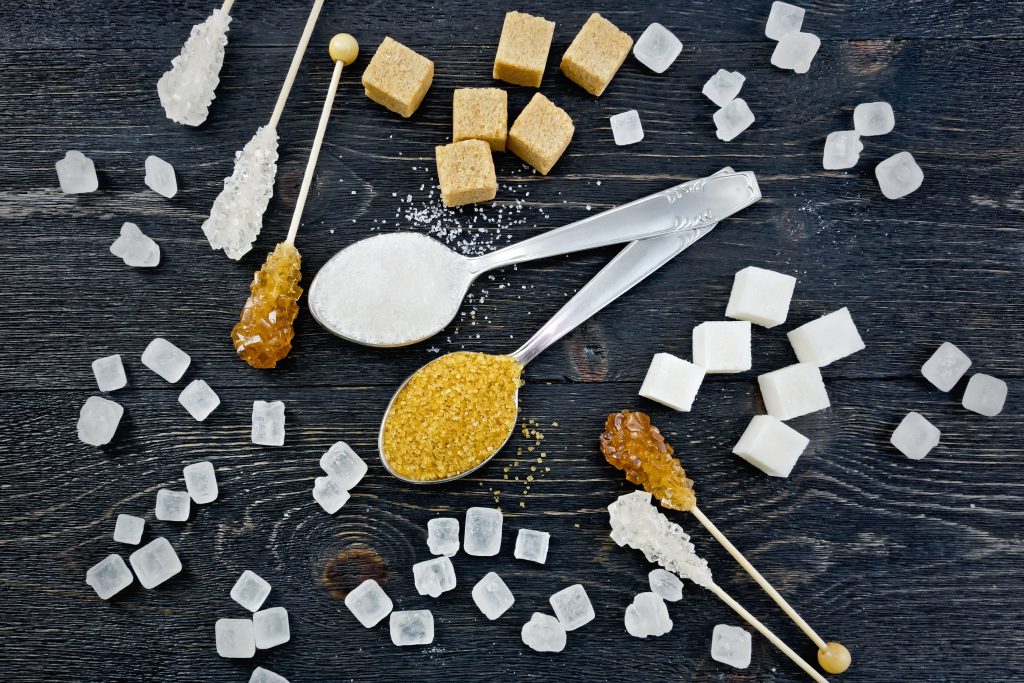
For centuries, sugar held a firm grip on the sweetener throne, reigning supreme in kitchens and beverage formulations alike. Its natural sweetness and ability to enhance flavors made it a staple ingredient.
However, the tides of change began to turn as the beverage industry sought more cost-effective and readily available alternatives.
This shift in approach, driven by economic factors and advancements in food technology, led to the rise of alternative sweeteners. Among these contenders, high-fructose corn syrup (HFCS) emerged as a frontrunner, ultimately changing the face of the beverage industry.
A Brief History of Sweeteners in Soft Drinks
Initially, soft drinks were simple concoctions of carbonated water, flavorings, and, of course, sweeteners. Natural sugars, primarily from sugar cane, served as the initial sweetener of choice.
However, the demand for soft drinks surged, prompting a need for a more readily available and economically viable sweetener option. This demand coincided with advancements in food processing technology, paving the way for the introduction of refined sugars and, eventually, high-fructose corn syrup (HFCS) into the world of soft drinks.
The adoption of HFCS marked a turning point in the industry. Its cost-effectiveness and ease of production made it an attractive alternative to traditional sugar, ultimately leading to its widespread use in soft drinks and other beverages.
Transition from Sugar to High-Fructose Corn Syrup
The transition from sugar to high-fructose corn syrup (HFCS) in the beverage industry was a gradual process, influenced by various factors, including economic considerations and agricultural policies. Corn syrup, a sweetener derived from cornstarch, was already being used in certain food products. Still, it was the development of HFCS that truly revolutionized the sweetener market.
HFCS, with its higher fructose content compared to traditional corn syrup, offered a more intense sweetness profile. This allowed manufacturers to use less of it to achieve the desired level of sweetness. As a result, HFCS proved to be a more cost-effective alternative to sugar.
Furthermore, government subsidies on corn production made HFCS an even more appealing option for beverage makers, leading to its widespread adoption and, consequently, a significant shift in the landscape of caloric sweeteners.
Understanding High-Fructose Corn Syrup (HFCS)
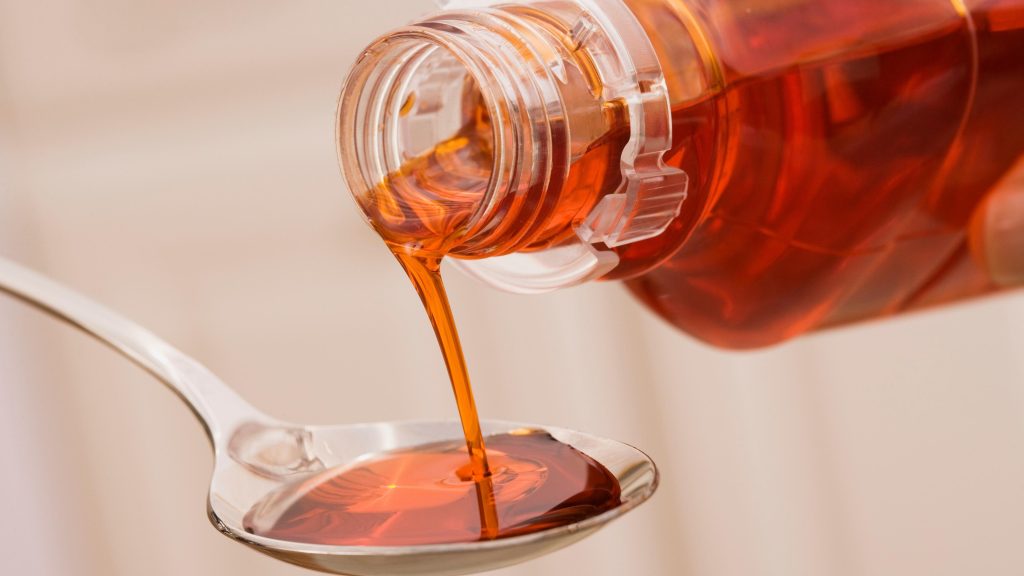
High-fructose corn syrup (HFCS) is a commonly used caloric sweetener in the United States and various other regions. It is extensively utilized in beverages and a wide array of products due to its affordability and sweet taste. HFCS, mainly composed of glucose and fructose derived from corn syrup, contributes to the caloric content of drinks.
The consumption of HFCS has been linked to adverse health effects, including weight gain and an increased risk of metabolic syndrome. Numerous studies have examined its impact on human health, with some pointing to associations with cardiovascular diseases and diabetes mellitus.
What is High-Fructose Corn Syrup?
High-fructose corn syrup (HFCS) is a sweetener derived from corn starch, which undergoes a multi-step enzymatic process to convert some of its glucose into fructose. This process results in a syrup with a higher proportion of fructose compared to regular corn syrup, hence the name “high-fructose.”
HFCS is composed of two simple sugars: fructose and glucose. Fructose is naturally found in fruits and honey, while glucose is the body’s primary energy source. However, the ratio of fructose to glucose in HFCS is different from what is naturally found in fruits and honey.
This difference in ratio has been a focal point of scientific inquiry, with researchers investigating whether it contributes to the health effects associated with excessive HFCS consumption.
Production Process of HFCS
The manufacturing process of high-fructose corn syrup (HFCS) is a fascinating feat of food technology. It begins with corn kernels, which are steeped in water to extract the starch. The starch then undergoes a series of enzymatic reactions, converting it into a mixture of glucose, maltose, and other sugars.
This mixture is then subjected to a process called “isomerization,” where enzymes transform some of the glucose into fructose, resulting in corn syrup with a higher fructose content. The resulting product is a clear, viscous liquid sweetener, much like regular corn syrup but with a sweeter profile.
Interestingly, specialized enzymes and carefully controlled conditions are critical for achieving the desired fructose-to-glucose ratio in HFCS, showcasing the precision involved in its production.
Why HFCS Became the Dominant Sweetener
Several factors contributed to the widespread adoption of high-fructose corn syrup (HFCS) as the dominant sweetener in many beverages and processed foods. It’s essential to acknowledge that this shift was not solely driven by consumer preferences but also by a confluence of economic, agricultural, and technological factors.
The sweetness level of HFCS, being comparable to sucrose, played a significant role in its appeal. It offered manufacturers an easy way to replicate the familiar sweetness of sugar while potentially reducing costs.
Additionally, its liquid form provided advantages in terms of handling, transportation, and integration into existing manufacturing processes.
Furthermore, agricultural policies and subsidies in the United States contributed to an abundance of corn, making HFCS a readily available and economically viable option for manufacturers. This, coupled with its ease of use and comparable sweetness to sugar, cemented its place as a dominant force in the sweetener industry.
Health Implications of HFCS Consumption
The increased consumption of high-fructose corn syrup (HFCS) has sparked considerable discussion and debate within the scientific community, with researchers diligently investigating its potential health implications. Studies exploring the metabolic effects of HFCS have garnered significant interest, particularly in light of rising rates of obesity, diabetes, and other metabolic disorders.
While HFCS shares a similar caloric value per gram with sugar, some research suggests it might be metabolized differently, potentially contributing to adverse health outcomes when consumed in excess. Further research is necessary to confirm these findings and fully elucidate the complex relationship between HFCS consumption and human health.
Metabolic Effects of HFCS
The metabolic effects of high-fructose corn syrup (HFCS) have become a subject of intense scientific scrutiny, particularly concerning its potential role in the development of metabolic syndrome, a cluster of risk factors that increase the likelihood of heart disease, stroke, and type 2 diabetes.
One area of concern is the impact of HFCS on blood glucose levels. While HFCS does not cause a rapid spike in blood glucose as some sugary foods might, some studies suggest it may contribute to insulin resistance over time. Insulin resistance, a condition in which the body’s cells become less responsive to insulin, can lead to elevated blood glucose levels and, eventually, type 2 diabetes.
Furthermore, research suggests that excessive HFCS consumption might influence the body’s handling of fatty acids, potentially promoting the accumulation of fat in the liver and other tissues. This accumulation, known as hepatic steatosis or fatty liver disease, can disrupt normal liver function and increase the risk of more serious liver problems.
HFCS and Obesity Epidemic in the United States
The rise of high-fructose corn syrup (HFCS) in the United States has coincided with a dramatic increase in the prevalence of obesity, prompting investigations into a potential link between the two. The obesity epidemic in the United States is a complex issue with multiple contributing factors, but the role of dietary sugars, including HFCS, has been a significant focus of research.
Observational studies have shown a correlation between higher intake of sugar-sweetened beverages, many of which contain HFCS, and increased body weight. However, it’s important to note that correlation does not equal causation. While these studies highlight a potential association, they cannot definitively prove that HFCS consumption directly causes obesity.
Further research, including controlled trials, is necessary to fully understand the impact of HFCS on body weight and its role, if any, in the obesity epidemic. The complex interplay of genetics, lifestyle factors, and overall dietary patterns must be considered when investigating this complex issue.
The Debate on HFCS and Diabetes
The debate surrounding high-fructose corn syrup (HFCS) and its potential link to diabetes mellitus, a chronic metabolic disorder characterized by elevated blood glucose levels, has been a persistent topic of discussion within the scientific community and beyond. The concern primarily stems from the unique metabolic pathway of fructose, a primary component of HFCS.
Some studies suggest that excessive consumption of fructose might lead to insulin resistance, a condition in which the body’s cells become less responsive to the hormone insulin, which is responsible for regulating blood glucose levels. Over time, insulin resistance can progress to prediabetes and, eventually, type 2 diabetes.
However, it is crucial to approach this topic with nuance. The relationship between HFCS and diabetes is complex, and attributing increased risk solely to HFCS consumption oversimplifies the issue. Several factors influence the development of diabetes, including genetics, lifestyle choices, and overall dietary patterns. More robust research is needed to fully disentangle these factors and understand the specific role of HFCS, if any, in diabetes risk.
Comparative Analysis of Sweeteners
As consumers become increasingly conscious of their sugar intake, understanding the differences between various types of sweeteners is paramount. It’s not just about sweetness anymore; health implications, caloric content, and even ethical sourcing all factor into the choices we make.
Comparative analysis of sweeteners, from the ubiquitous table sugar to the array of artificial and natural alternatives, reveals a spectrum of attributes and potential drawbacks. Understanding these nuances can empower consumers to make informed decisions aligning with their health goals and preferences.
HFCS vs. Sugar: Chemical Composition and Health Effects
The debate over high-fructose corn syrup (HFCS) versus table sugar often centers around their perceived health effects. Chemically, both are composed of glucose and fructose, but in slightly different ratios. Table sugar, or sucrose, is a disaccharide made of one glucose molecule linked to one fructose molecule, while HFCS typically contains a higher proportion of free fructose.
This difference in structure has led some researchers to suggest that HFCS might be metabolized differently by the body, potentially contributing to increased health risks when consumed in excess. Some studies have linked excessive HFCS consumption to adverse metabolic effects, such as insulin resistance, fatty liver disease, and dyslipidemia.
However, it’s crucial to note that the scientific evidence is not entirely conclusive. Many health organizations, including the American Heart Association and the Academy of Nutrition and Dietetics, maintain that HFCS and sugar are nutritionally similar and pose equal health risks when consumed in excess of recommended limits. Ultimately, moderation and a balanced diet remain key, regardless of the sweetener.
Artificial Sweeteners as Alternatives
Artificial sweeteners, often touted as calorie-free alternatives to sugar and HFCS, have gained popularity among those seeking to reduce sugar intake or manage weight. These synthetic sweeteners, often hundreds or thousands of times sweeter than sugar, provide a sweet taste without contributing any calories.
Common artificial sweeteners include aspartame, sucralose, acesulfame-K, and saccharin, each with unique properties and potential health effects. While generally recognized as safe when consumed within acceptable daily intakes, some studies have raised concerns about potential long-term health consequences associated with artificial sweeteners.
These concerns range from disrupted gut microbiota to increased risk of certain diseases. However, more research is needed to confirm these findings and establish a definitive link between artificial sweetener consumption and adverse health outcomes.
Emerging Natural Sweeteners in the Market
In response to growing consumer demand for healthier and more natural food options, the market for natural sweeteners is rapidly expanding. These sweeteners, derived from natural sources like plants, offer alternatives to sugar and artificial sweeteners, often boasting unique flavor profiles and potential health benefits.
Stevia, monk fruit, and allulose are among the most popular natural sweeteners gaining traction in the beverage industry. These sugar substitutes generally have a lower caloric content than sugar and exhibit minimal impact on blood glucose levels, making them attractive options for individuals with diabetes or those following low-carbohydrate diets.
While the long-term health effects of these natural sweeteners are still under investigation, their growing popularity and perceived naturalness position them as key players in the evolving landscape of sweeteners within the beverage industry.
Consumer Preferences and Industry Responses
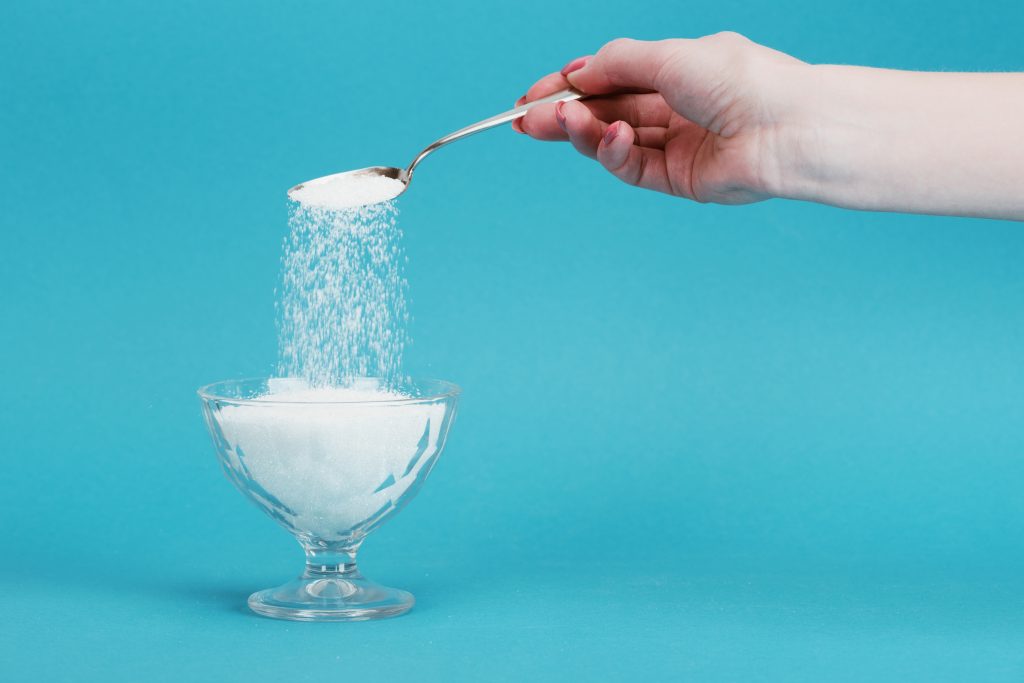
Consumer preferences are constantly evolving, shaping the food and beverage landscape and driving innovation within the industry. The growing awareness of sugar’s impact on health, fueled by public health campaigns and increasing scientific evidence, has contributed to a noticeable shift in consumer preferences towards lower-sugar alternatives.
The beverage industry has responded to these evolving demands by exploring new sweetener options, reformulating existing products, and embracing transparency in labeling and marketing. This adaptation reflects a broader trend within the food industry, moving towards catering to health-conscious consumers seeking healthier and more sustainable choices.
Shift Towards Low-Calorie Sweeteners
The demand for low-calorie sweeteners has surged in recent years, driven by a combination of factors, including rising health concerns related to sugar consumption and a desire for weight management. Low-calorie sweeteners, encompassing both artificial and natural alternatives, offer the allure of sweetness without the added calories associated with sugar and high-fructose corn syrup.
This shift in consumer demand reflects a growing awareness of the potential health implications of excessive sugar intake. The link between sugary drinks, weight gain, and chronic diseases like type 2 diabetes and heart disease has prompted many individuals to reconsider their sugar consumption habits.
As a result, beverage companies have responded to this shift by expanding their product lines to include low-calorie and sugar-free options, often utilizing artificial sweeteners like aspartame and sucralose or natural sweeteners like stevia and monk fruit.
This trend towards low-calorie sweeteners underscores the evolving relationship between consumer preferences, health consciousness, and the beverage industry’s commitment to innovation.
Demand for Organic and Natural Sweetener Options
The demand for organic and natural sweetener options has witnessed a significant upswing, reflecting a broader consumer trend towards natural and minimally processed foods. Consumers are increasingly discerning about the ingredients in their beverages, seeking out products that align with their values of health, sustainability, and transparency.
Organic sweeteners, produced without the use of synthetic pesticides, herbicides, and fertilizers, appeal to consumers prioritizing environmental responsibility and personal health. Natural sugars like honey, maple syrup, and agave nectar, perceived as less processed and more wholesome alternatives to refined sugar, have also gained favor.
This demand for organic and natural sweeteners extends beyond mere taste preferences. It represents a conscious shift towards a more holistic approach to food and beverage consumption, where the origins, ethics, and environmental impact of ingredients factor into purchasing decisions.
Beverage Industry’s Adaptation to Consumer Trends
The beverage industry, in response to evolving consumer trends and the growing demand for healthier options, has demonstrated remarkable adaptability. Gone are the days when sugary drinks reigned supreme; today, supermarket shelves boast a dizzying array of beverages catering to diverse tastes and dietary preferences.
The industry’s adaptation is evident in the proliferation of low-sugar and sugar-free beverages, often sweetened with natural alternatives or artificial sweeteners. Recognizing consumer concerns over sugar content, beverage companies have reformulated existing products, reducing sugar content while maintaining flavor profiles.
Moreover, the industry has embraced innovation, continually researching and developing new sweetener technologies to meet the evolving demands of health-conscious consumers. This adaptation underscores the dynamic interplay between consumer preferences and industry responsiveness, highlighting the beverage industry’s commitment to staying ahead of the curve in a constantly evolving market.
Regulatory Landscape for Sweeteners
Navigating the complex world of sweeteners requires a clear understanding of the regulatory landscape that governs their use in food and beverages. Regulatory bodies, such as the US Food and Drug Administration (FDA) and international organizations like the World Health Organization (WHO), play a crucial role in ensuring the safety and appropriate labeling of sweeteners.
From establishing acceptable daily intakes to reviewing scientific evidence on potential health effects, these organizations set standards and guidelines to protect public health and guide the industry’s use of sweeteners. Understanding these regulations is crucial for both consumers and manufacturers to make informed decisions and navigate the ever-evolving world of sweeteners.
FDA Regulations on Sweeteners in Beverages
The US Food and Drug Administration (FDA) plays a crucial role in regulating the use of sweeteners in beverages and other food products. As with all food additives, sweeteners undergo rigorous safety assessments before receiving FDA approval for use in the food supply.
The FDA establishes acceptable daily intakes (ADIs) for each approved sweetener, representing the amount an individual can safely consume daily over a lifetime without adverse health effects. These ADIs are based on extensive scientific data and are subject to ongoing review as new research emerges.
Furthermore, the FDA mandates clear and accurate labeling of sweeteners on food and beverage products. This includes listing sweeteners in the ingredients list and providing information on sugar content in the Nutrition Facts panel. These regulations aim to protect public health and provide consumers with the information needed to make informed choices regarding their sweetener intake.
Global Standards and Guidelines on Sweetener Use
Beyond national regulations, global standards and guidelines on sweetener use are crucial to ensure consistency and protect public health across borders. The World Health Organization (WHO), for instance, provides recommendations on sugar intake, encouraging individuals to limit their consumption of free sugars to less than 10% of their total daily energy intake.
These recommendations are based on a systematic review of scientific evidence examining the potential health effects of excessive sugar consumption, aiming to reduce the risk of chronic diseases like obesity, type 2 diabetes, and heart disease. International organizations also collaborate on setting standards for labeling practices, promoting clarity and consistency in how sweeteners are presented on nutrition facts panels worldwide.
This global effort ensures consumers, regardless of location, have access to accurate information regarding sweetener content, empowering them to make informed decisions aligning with their health and dietary needs.
Technological Advances in Sweetener Manufacturing
Technological innovations continually reshape the landscape of sweetener manufacturing. Advancements in biotechnology, for instance, have led to the development of novel sweeteners with enhanced properties, such as increased sweetness intensity or improved heat stability.
These advancements are not just about creating new sweeteners but also about optimizing existing production processes, making them more efficient, sustainable, and cost-effective. The quest for sustainable and environmentally friendly practices further drives innovation in sweetener manufacturing.
Innovations in Sweetener Production Processes
Technological advancements have ushered in a new era of efficiency and innovation in sweetener production processes. From the field to the factory, innovations are transforming how sweeteners are derived, refined, and ultimately incorporated into our favorite food and beverages.
One area where technological advancements are making an impact is precision agriculture. By utilizing data analytics, sensors, and GPS technology, farmers can optimize crop yields, reduce waste, and minimize the environmental footprint of sweetener production. In the realm of processing, advancements like enzymatic conversion and membrane filtration have led to more efficient and sustainable extraction and purification methods.
These innovations translate to reduced energy consumption, less waste generation, and a lower overall environmental impact for sweetener manufacturing. As technology continues to evolve, we can expect to see even more sustainable and efficient practices emerge, shaping a more environmentally responsible future for sweetener production.
Future Trends in Sweetener Development
The future of sweeteners is brimming with possibilities, driven by ongoing scientific research, evolving consumer preferences, and a global focus on health and sustainability. One prominent trend is the exploration of novel sweeteners from natural sources. Scientists are investigating a wide range of plants, fruits, and even microorganisms for their potential to yield sweeteners with desirable properties.
Furthermore, advancements in biotechnology are paving the way for precision fermentation, a process where microorganisms are engineered to produce specific sweeteners with enhanced sweetness profiles or improved health benefits. This approach holds significant promise for creating sustainable, high-quality sweeteners tailored to specific needs.
As research continues, the future of sweeteners will likely involve a blend of natural discoveries, technological innovations, and a deep understanding of consumer desires, leading to a diverse and sustainable landscape of sweetening options.
Environmental Considerations
As the demand for sweeteners continues to rise, it is crucial to acknowledge the environmental impact of their production. From land use and water consumption to energy usage and waste generation, the entire life cycle of sweetener production from crop cultivation to processing and transportation has environmental implications.
Sustainable practices are essential to mitigate these impacts. This includes exploring alternative sweetener sources with lower environmental footprints, promoting sustainable farming practices to reduce water and energy use, and optimizing manufacturing processes to minimize waste generation.
Impact of Sweetener Production on the Environment
The production of sweeteners, whether from sugarcane, corn, or other sources, inevitably has an environmental impact. Land use for agriculture, water consumption for irrigation, and energy usage during processing all contribute to the overall environmental footprint of sweetener production.
Sustainable practices are crucial to mitigate these impacts. This includes minimizing water usage through efficient irrigation techniques, reducing reliance on fossil fuels by transitioning to renewable energy sources, and adopting precision agriculture practices to optimize crop yields and minimize fertilizer and pesticide use.
Waste management plays a significant role in sustainable sweetener production. By implementing strategies to reduce, reuse, and recycle byproducts from processing, the industry can minimize waste generation and move towards a more circular economy approach, ensuring a more sustainable future for sweetener production.
Sustainable Practices in Sweetener Manufacturing
The sweetener manufacturing industry is increasingly adopting sustainable practices incorporating environmental considerations into every stage of production. This commitment to sustainability stems from a growing awareness of the environmental impact of traditional manufacturing processes and a desire to minimize the industry’s ecological footprint.
Sustainable manufacturing in the sweetener industry encompasses various initiatives. One key area is reducing water usage. Water is an essential resource in sweetener production, particularly for crops like sugarcane and sugar beets. By implementing efficient irrigation systems and exploring drought-tolerant crop varieties, manufacturers can significantly reduce their water footprint.
Other sustainable practices include transitioning to renewable energy sources, reducing greenhouse gas emissions, and minimizing waste generation through efficient process design and by-product utilization. By embracing these sustainable manufacturing practices, the sweetener industry can contribute to a more environmentally responsible and sustainable future.
The Role of Sweeteners in Beverage Formulation
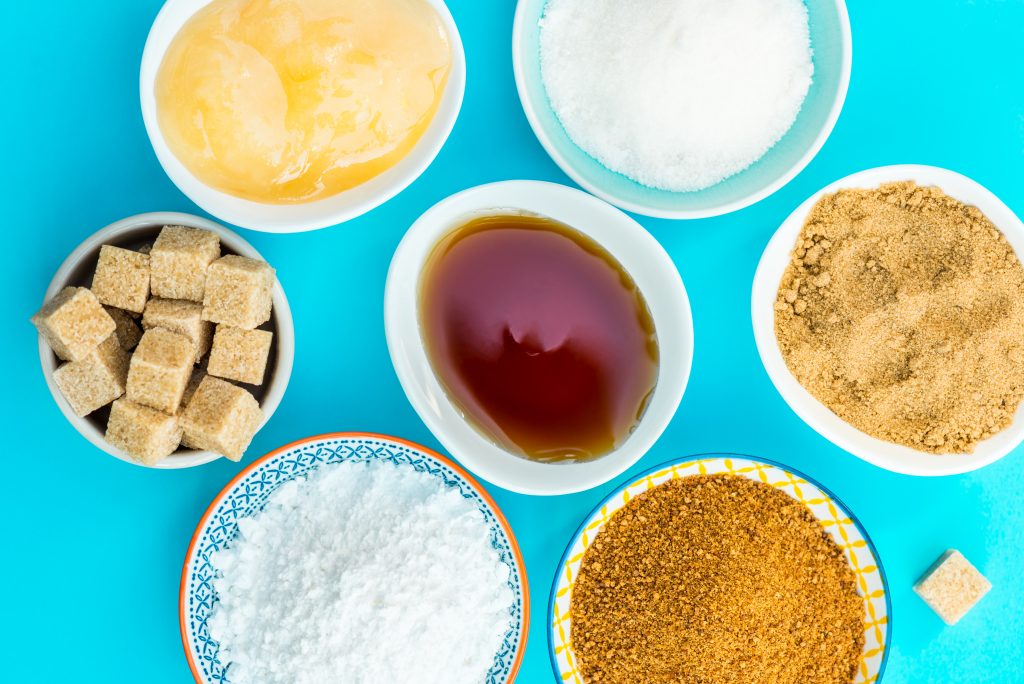
Beyond simply providing sweetness, sweeteners play a multifaceted role in beverage formulation. They contribute to the overall sensory experience, influencing flavor profile, mouthfeel, and even color. A thorough understanding of how different sweeteners interact with other ingredients is crucial for crafting successful beverage formulations.
Sweeteners can enhance certain flavors, mask unpleasant notes, and even alter the perception of acidity or bitterness. The interplay between sweeteners and other ingredients is complex, requiring careful consideration during the formulation process to achieve the desired taste and sensory experience.
Flavor Profile and Consistency
Sweeteners are paramount in shaping the flavor profile and consistency of beverages, impacting not only the perceived sweetness but also the overall taste experience. The choice of sweetener significantly influences the final flavor profile, whether enhancing fruity notes, adding caramel undertones, or providing a clean, neutral sweetness.
Beyond merely adding sweetness, sweeteners can modulate other taste perceptions. For example, they can balance acidity in citrus drinks, round out bitterness in coffee beverages, or create a smoother mouthfeel in dairy-based products. Understanding these nuances allows formulators to craft well-balanced and enjoyable beverages.
Moreover, sweeteners contribute to the consistency and texture of beverages. They can add body, thickness, or creaminess depending on their concentration and interaction with other ingredients. Achieving the desired consistency is crucial for consumer acceptance, as it influences the overall sensory experience and perceived quality of the beverage.
Sweetener Synergy with Other Ingredients
The synergy between a sweetener and other ingredients is crucial in beverage formulation, impacting not only the final taste but also the overall sensory experience. Understanding how different sweeteners interact with various flavors, acids, and other components allows formulators to create well-balanced and delicious beverages.
For example, certain sweeteners, like honey or agave nectar, can complement fruity flavors, adding depth and complexity. Others, like stevia or monk fruit extract, provide a clean sweetness that lets natural fruit flavors shine through. The choice of sweetener should align with the desired flavor profile and enhance the overall taste experience.
Additionally, sweeteners can be strategically utilized to mask undesirable tastes or enhance specific flavor notes. They might be used to balance bitterness in coffee or chocolate drinks, counteract tartness in citrus-based beverages, or create a more rounded flavor profile in dairy products. The intricate interplay between sweeteners and other ingredients highlights the artistry and science of beverage formulation.
Marketing Strategies for Sweetened Beverages
Marketing strategies for sweetened beverages are constantly evolving in response to changing consumer preferences, heightened health concerns, and evolving regulations. Transparency in labeling, particularly regarding sugar content, has become paramount, allowing consumers to make informed choices aligned with their dietary needs and preferences.
Beyond simply listing ingredients, successful marketing strategies often highlight a beverage’s taste appeal while addressing health concerns. This might involve emphasizing natural ingredients, promoting lower-sugar options, or communicating potential health benefits associated with specific sweeteners.
Labeling and Consumer Perception
The labeling of sweetened beverages plays a pivotal role in shaping consumer perception and influencing purchasing decisions. As consumers become more discerning about sugar content and ingredient sourcing, clear, accurate, and transparent labeling is paramount.
Marketing claims on beverage labels, such as “low sugar,” “sugar-free,” or “naturally sweetened,” significantly impact consumer perception. It’s crucial for these claims to be truthful, substantiated, and easily understood by consumers to avoid misleading advertising.
Furthermore, the placement and prominence of sugar-related information on labels can influence purchasing behavior. Clearly displaying sugar content on the front of packaging, for instance, can empower consumers to make informed decisions at a glance. Transparent labeling fosters trust between consumers and beverage companies, contributing to a more ethical and informed marketplace.
Advertising Sweeteners: Health vs. Taste
Advertising strategies for sweetened beverages often navigate a delicate balance between promoting taste appeal and addressing health concerns. The allure of a refreshing, flavorful drink remains a powerful marketing tool, but the increasing awareness of sugar’s impact on health has led to more nuanced advertising approaches.
Many beverage companies now focus on highlighting the taste of their products while emphasizing lower-sugar options or the use of natural sweeteners. This dual approach aims to satisfy consumer cravings while addressing health consciousness. Some campaigns focus on the “better-for-you” aspect of certain sweeteners.
However, it is crucial for such claims to be backed by scientific evidence and communicated responsibly. Transparent advertising that prioritizes both taste and health considerations can build trust with consumers and contribute to a more health-conscious marketplace.
Challenges and Controversies
The world of sweeteners is not without its challenges and controversies. Despite rigorous safety assessments, debates surrounding potential long-term health effects of certain sweeteners, especially artificial ones, persist. Balancing consumer preferences with public health concerns remains a continuous challenge for the industry.
Accusations of industry influence on scientific research and concerns regarding transparency in labeling and marketing practices have fueled suspicion and eroded consumer trust. Addressing these challenges requires a multi-faceted approach involving open communication, rigorous scientific research, and a shared commitment to transparency and ethical practices.
Health Advocacy and Public Backlash
The role of sweeteners in public health has been a topic of increasing scrutiny and debate, leading to both health advocacy efforts and consumer backlash. Public health advocates have raised concerns about the potential link between excessive sugar consumption and chronic diseases like obesity, type 2 diabetes, and heart disease.
This advocacy has resulted in initiatives to reduce sugar intake, such as sugar taxes on sweetened beverages and public awareness campaigns emphasizing the importance of balanced diets. These efforts aim to empower individuals to make healthier choices and mitigate the health risks associated with excessive sugar consumption.
However, these initiatives have also faced consumer backlash from those who view them as government overreach or an infringement on personal choice. Additionally, confusion and mistrust can arise from conflicting information regarding the health effects of various sweeteners, highlighting the need for clear, science-based communication to guide public understanding.
Scientific Research and Industry Funding
The relationship between scientific research and industry funding, particularly within the realm of sweeteners, raises important considerations about research bias and transparency. While industry-funded research can contribute valuable insights, ensuring the objectivity and impartiality of findings is crucial.
Concerns arise when industry funding influences study design, data interpretation, or publication of results, potentially skewing findings to favor specific industry interests. Transparency in disclosing funding sources and potential conflicts of interest is essential to maintain the integrity of scientific research.
Moreover, promoting independent research initiatives funded by government agencies or non-profit organizations is vital for providing balanced and unbiased perspectives on the health effects of sweeteners. A diverse and transparent research landscape fosters greater trust in scientific findings and enables evidence-based decision-making regarding sweetener consumption and public health policies.
Future of Sweeteners in Beverages
The future of sweeteners in beverages is poised for exciting developments driven by ongoing research, technological advancements, and shifting consumer priorities. The quest for natural, low-calorie, and sustainable sweetener options is expected to intensify, with a focus on discovering new sources and optimizing existing production processes.
Consumer demand for transparent labeling, coupled with increasing awareness of the health impacts of added sugars, will likely shape industry practices, leading to a greater emphasis on natural ingredients and clear communication about sugar content. The future landscape of sweeteners promises to be diverse and dynamic, reflecting a complex interplay of health considerations, environmental consciousness, and innovation in food technology.
Potential for New Sweetener Discoveries
The search for new and improved sweeteners is a continuous endeavor driven by a quest for healthier, more sustainable, and taste-enhancing options. Research and development efforts are exploring diverse avenues, from harnessing the power of nature to leveraging cutting-edge biotechnology.
One promising frontier lies in discovering novel sweeteners from natural sources. Scientists are investigating plants, fruits, and even lesser-known botanicals for their potential to yield sweeteners with unique flavor profiles or enhanced sweetness properties. Advancements in plant breeding and genetic engineering could further optimize these natural sources for sweeter yields.
Furthermore, the field of biotechnology holds immense potential for developing next-generation sweeteners. Precision fermentation, a process where microorganisms are engineered to produce specific sweeteners, is gaining momentum as a sustainable and efficient approach. These advancements, combined with a deep understanding of human taste perception, could lead to a new generation of sweeteners that satisfy our sweet cravings while aligning with our health and environmental goals.
Consumer-Driven Changes in Sweetener Use
The landscape of sweetener use is undergoing a dynamic transformation, fueled by evolving consumer preferences, heightened health consciousness, and a growing demand for transparency and sustainability. These consumer-driven changes are shaping market trends and influencing how the beverage industry formulates and markets its products.
One significant trend is the increasing demand for reduced-sugar offerings. Consumers are becoming more mindful of their sugar intake, seeking out beverages that deliver on taste without excessive amounts of added sugars. This has prompted beverage companies to explore natural and low-calorie sweeteners, reformulate existing products, and introduce smaller portion sizes.
Furthermore, consumers are increasingly discerning about the origins and ethical implications of their food and beverage choices. This trend towards conscious consumption has sparked demand for organic and sustainably sourced sweeteners, prompting companies to prioritize transparency in their supply chains and labeling practices.
Cheers!
Understanding the primary sweetener in beverage formulas is crucial for both industry professionals and consumers. The evolution of sweeteners in the beverage industry, particularly the dominance of High-Fructose Corn Syrup (HFCS), has sparked debates on its health implications.
As consumer preferences shift towards organic and natural options, the industry adapts by exploring low-calorie and alternative sweeteners. While regulatory standards play a key role, technological advancements in sweetener manufacturing pave the way for future innovations.
Environmental considerations and the role of sweeteners in beverage formulation also shape the industry landscape. Stay informed about the challenges, controversies, and emerging trends in sweetener use.
For more insights, get in touch with our experts today.


